How Sophia Yeshi is tackling diversity in design with Broad Strokes
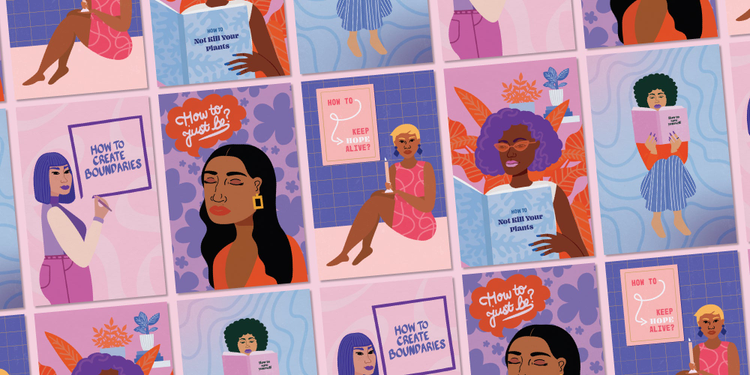
Image source: Sophia Yeshi.
Sophia Yeshi’s work is centered entirely around a noble cause — she is dedicated to celebrating Black women, people of color, and the LGBTQ+ community through digital illustration and graphic design. Her creations are defined by vibrant color palettes, organic shapes and lines, and dynamic figures that demand attention and carry a strong sense of urgency. “I tend to get inspired by my personal feelings and emotions. It can be a great way to process by channeling my feelings into my work, especially when it’s something that other people can relate to like imposter syndrome, anxiety, body image, and mental health.”
This year, Yeshi received funding from the Adobe Creative Residency Community Fund to support her project Broad Strokes, which focuses on what matters the most to her: community, collaboration, representation, and inclusivity. Broad Strokes consists of a constellation of activities, including a talk at San Francisco Design Week in June 2020 about disparities in the design field, a blog featuring interviews from up-and-coming creatives, and an illustrated collaborative postcard series about current events using Illustrator on the iPad. “The name Broad Strokes came from the idea that we are all forging our own paths and though our strokes are broad, they’re far reaching and impactful. It’s also a nod to the diversity that I seek to encompass in my work.”
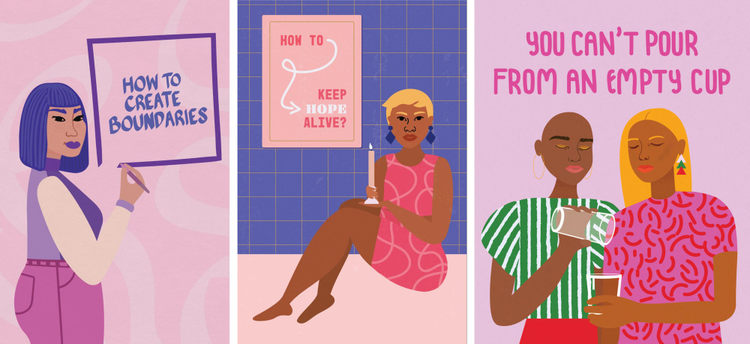
Postcards (left center), and illustration for SF Design Week from the Broad Strokes project by Sophia Yeshi.
Growing up, Yeshi never felt represented by the key figures in illustration and graphic design, who were overwhelmingly white and male. Over the years, much of her creative output has been driven to creating a better balance. Diversity and inclusion initiatives have gained much deserved attention in the last few years, but we are still far from seeing a broad shift in corporate company cultures. “I think it’s important to have more than just a few popular creatives at the top getting hired over and over again. Brands should ensure that they aren’t just picking from the same talent pool and that they have diverse voices being represented in leadership roles, not just freelancers and junior employees.”
Being intentional about your audience
Before having a consistent flow of clients, Yeshi worked full-time as a graphic designer for corporate companies. Although enterprise graphic design made up the bulk of the work she was doing at the time, she made the decision not to include any of those projects in her portfolio. This was because Yeshi considered it vital to only share the kind of work that she wanted to get hired for. “I was very intentional about only showcasing my illustration work so that brands could see what I cared about and the type of work I wanted to create.”
Because Yeshi’s creations center on the communities she identifies with, namely women of color and the LGBTQ+ community, there’s a strength and a feeling of authenticity to her work that makes it easy for others to relate with it. This is in stark contrast with the output of many brands that come across as trying too hard to be on trend but ultimately are just fake. Her work resonates because it comes from a real place. “It’s hard to relate to someone when you don’t know what they’ve been through, what they like, and how they feel. The other thing that I think works for me is that I focus on a limited audience. I’m happy for anyone that enjoys my work, but by being intentional about my audience, I’m able to speak to them more directly rather than trying to make everyone happy.”
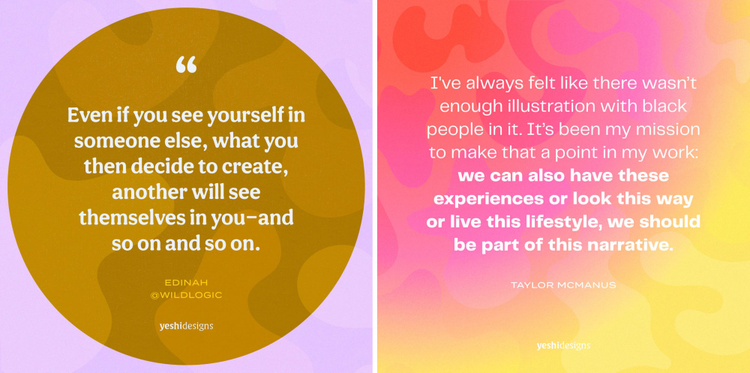
Quotes from the Broad Strokes project by Sophia Yeshi.
“My friends, family, and the community around me are a huge inspiration to me. Being allowed to be myself at a young age was instrumental in finding my voice as an adult.”
When it comes to collaborating with brands, Yeshi has done work for companies of all sizes, including The New York Times, Instagram, and Refinery29 among some of the better-known ones. She finds that smaller independent companies tend to give her more creative freedom, while larger companies typically have a lot more red-tape and a more convoluted approval process, which can make a project drag out longer than expected. “No matter the size of the company, I appreciate it when I can work with only one or two people throughout a project rather than getting feedback from an entire team. The most successful collaborations come from companies that are familiar with my work, my style, and they trust my creative vision.”
Moving forward, she would like to be involved with large-scale projects that live in physical spaces. The timeline might have been delayed by the COVID-19 pandemic, but in essence Yeshi sees herself doing more branding for large events, and seeing her work on a billboard, bus, subway, or pretty much anything that’s not digital, including packaging and products. “I’m starting to really value being able to touch and feel my work as opposed to just seeing it on a screen.”
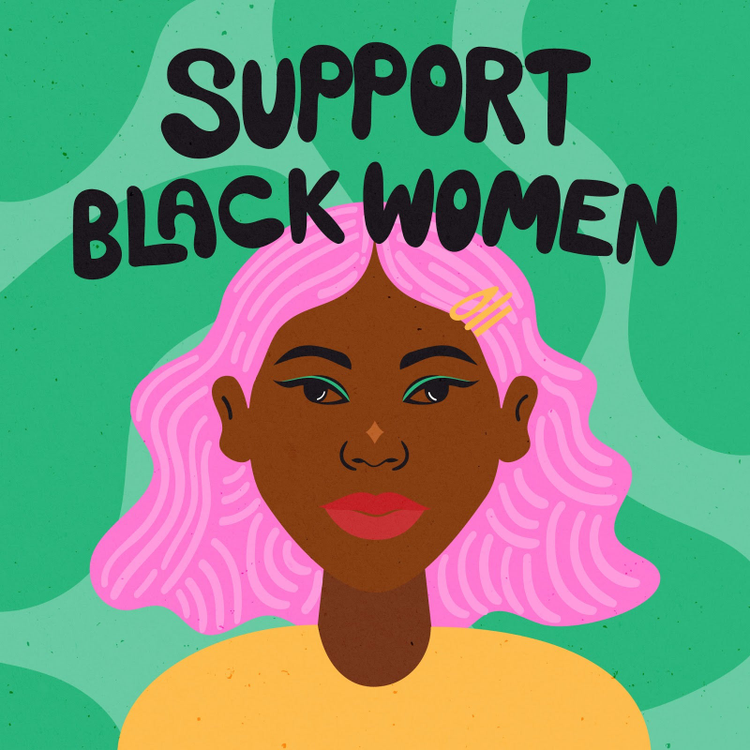
Support Black Women by Sophia Yeshi.
Sophia Yeshi’s tips for using Illustrator on the iPad
When it comes to using Illustrator on the iPad, Yeshi advises new users to approach it with an open mind. Although it’s not exactly the same as the desktop version, she finds it offers a fantastic series of tools that make designing and illustrating on the go a breeze. “I’ve really been loving the pen and pencil tool for drawing, and the symmetry tools for pattern making. Most of all, I’ve enjoyed being able to switch seamlessly between iPad and desktop with Adobe Creative Cloud — it’s been a life saver!”
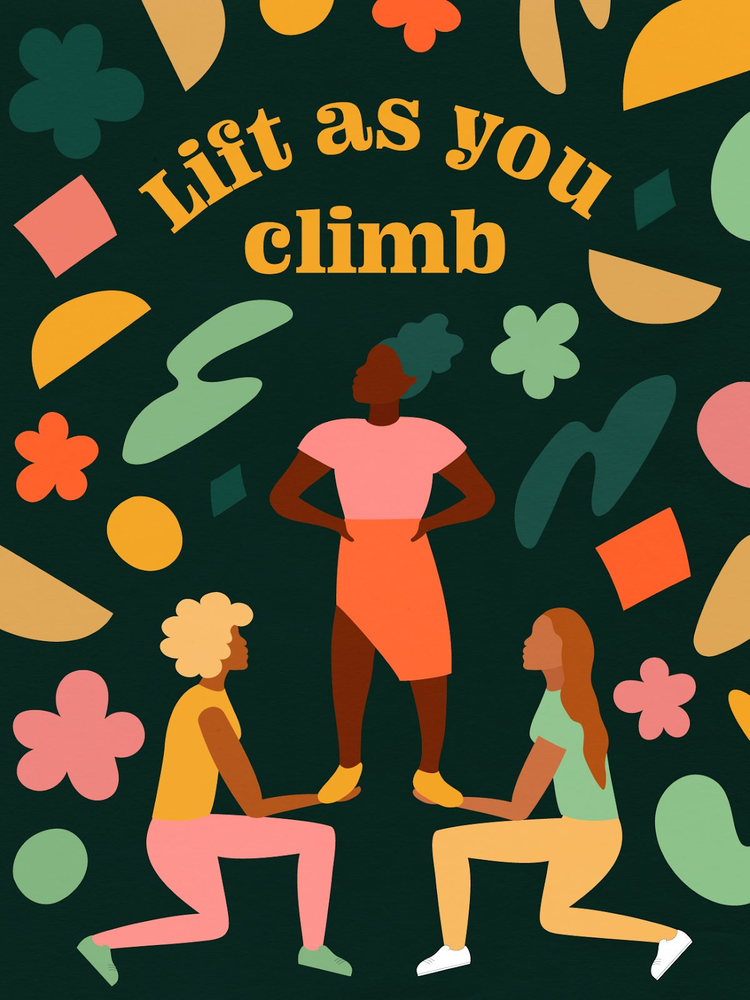
Lift as you climb by Sophia Yeshi, made with Illustrator on the iPad.
To learn more about Sophia Yeshi and her work, check out the links below: